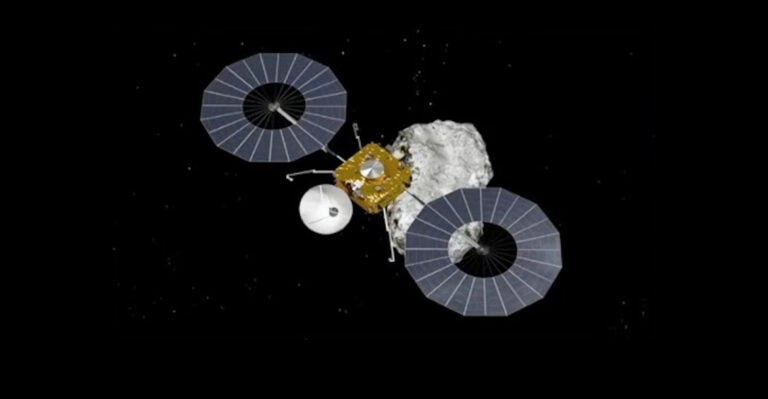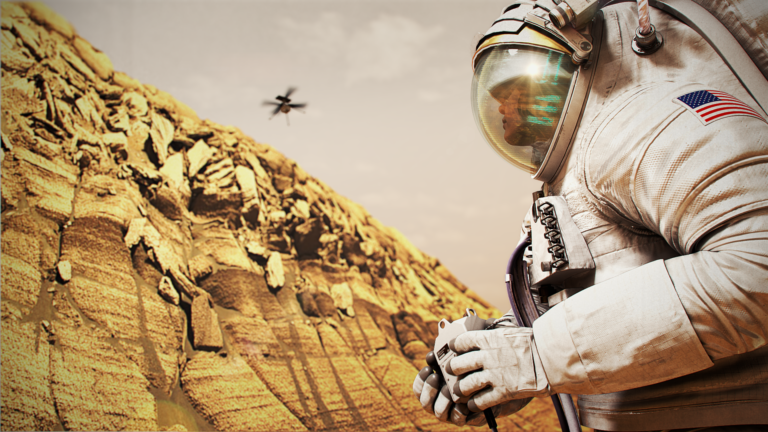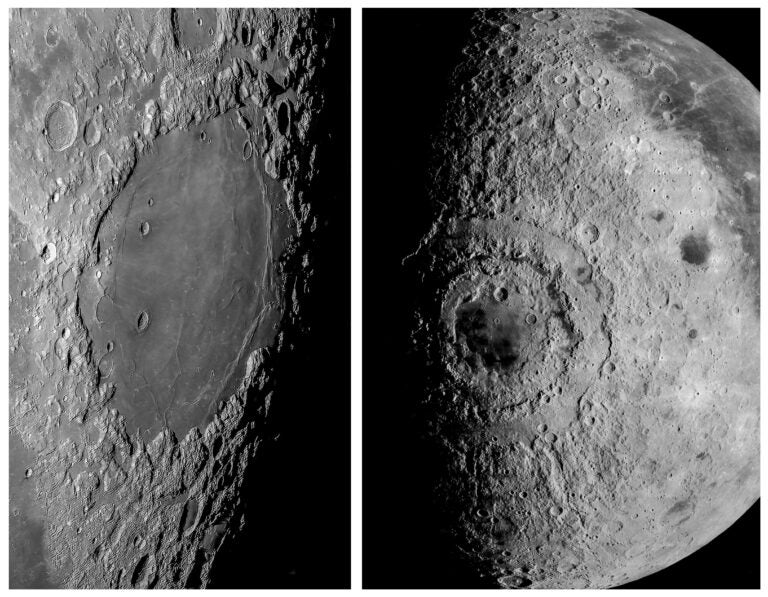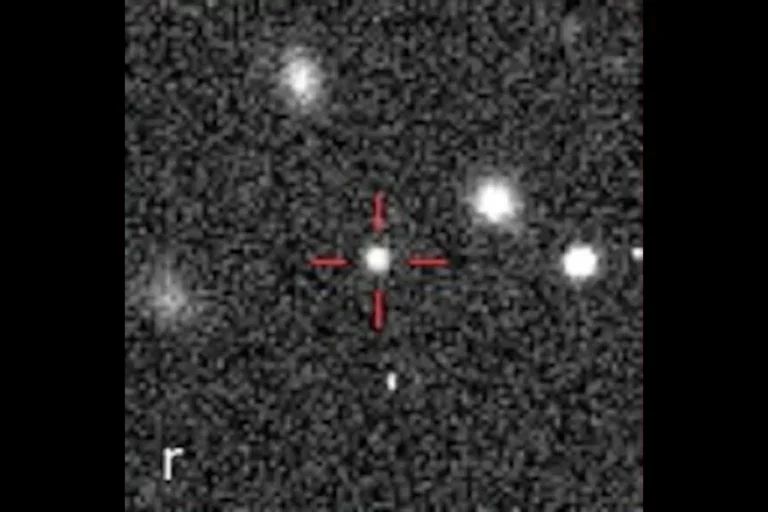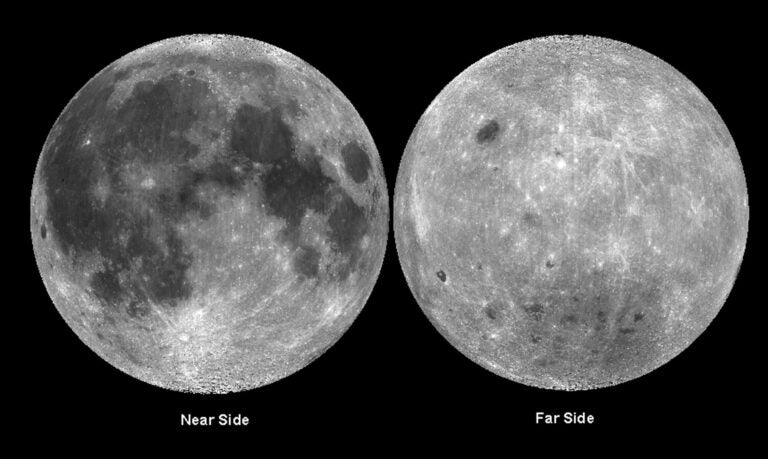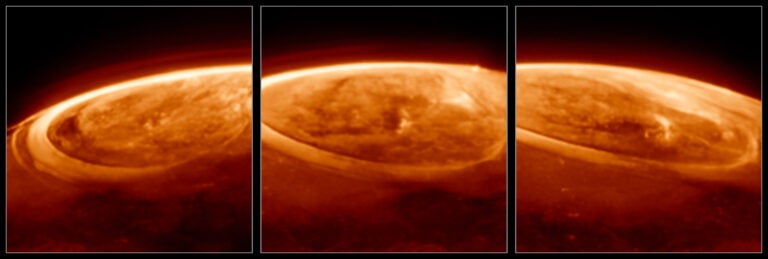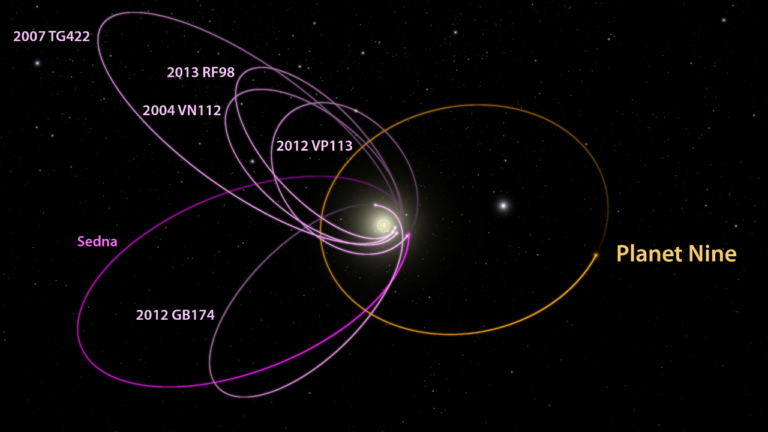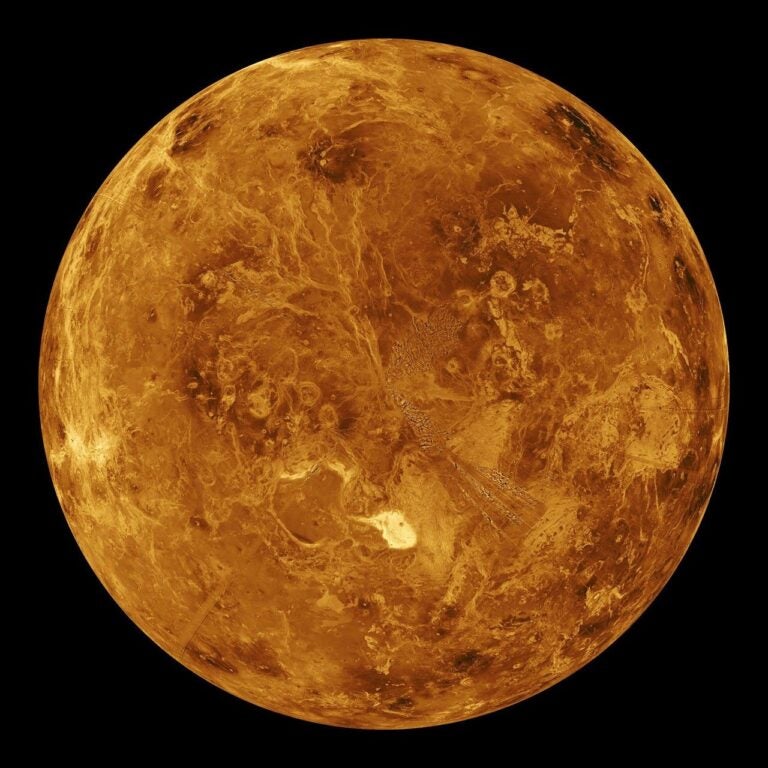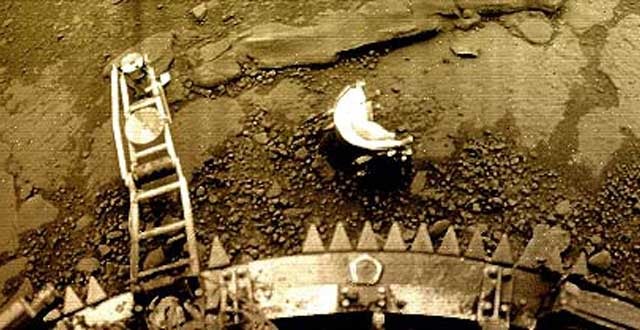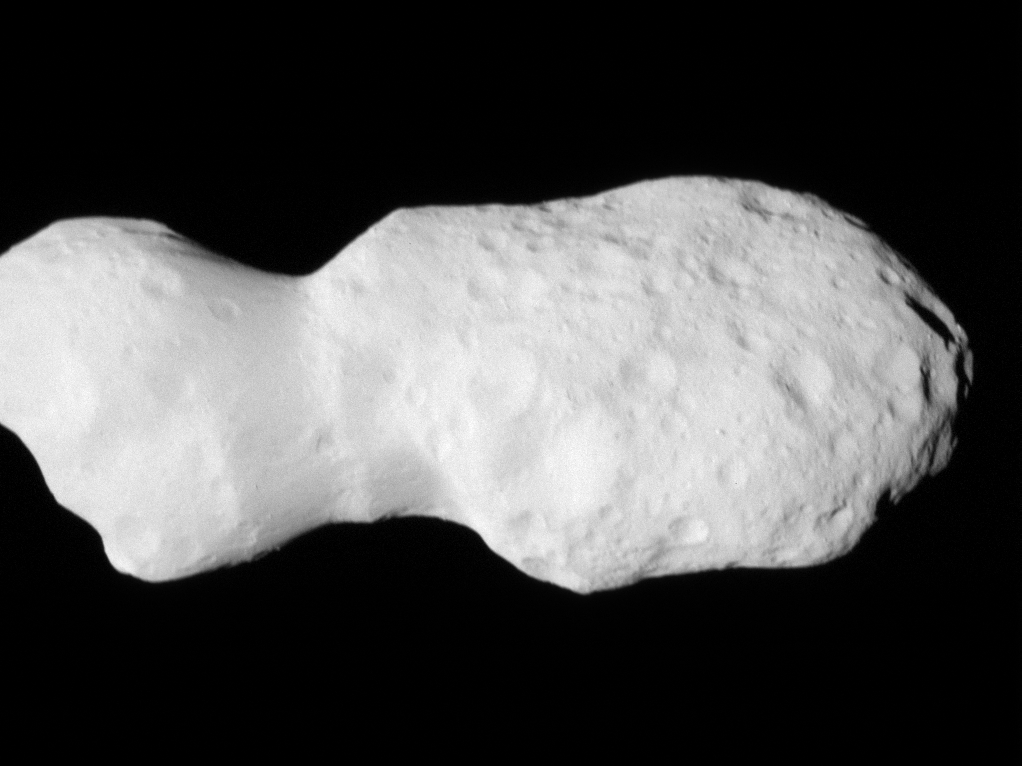
NASA’s Lucy spacecraft visited the asteroid 52246 Donaldjohanson on Sunday, April 20, coming within 600 miles (920 kilometers) of the object located in the inner region of the asteroid belt between Mars and Jupiter.
The asteroid was named after the paleontologist Donald Johanson, who in 1974 co-discovered the first identified example of previously unknown type of hominid. They named the specimen “Lucy,” which is what the mission is named after. Like their namesakes, the mission and this asteroid could help us understand more about our origins.
The day after the encounter, NASA released images of Donaldjohanson taken by the Lucy LOng Range Reconnaissance Imager (L’LORRII), the craft’s high-resolution camera. They revealed that the asteroid is 5 miles (8 km) long — bigger than scientists expected — and 2 miles (3.5 km) at its widest point.
The images also revealed Donaldjohanson’s interesting peanut shape, with two lobes connected by a narrow neck. It appears to be an elongated contact binary, which occurs when an asteroid is formed by two objects coming together. But it could be more complicated than that, as scientists were surprised by the shape of the neck, which resembles two nested ice cream cones, according to a NASA news release. “Asteroid Donaldjohanson has strikingly complicated geology,” said Hal Levison, principal investigator for Lucy at Southwest Research Institute, in the release.
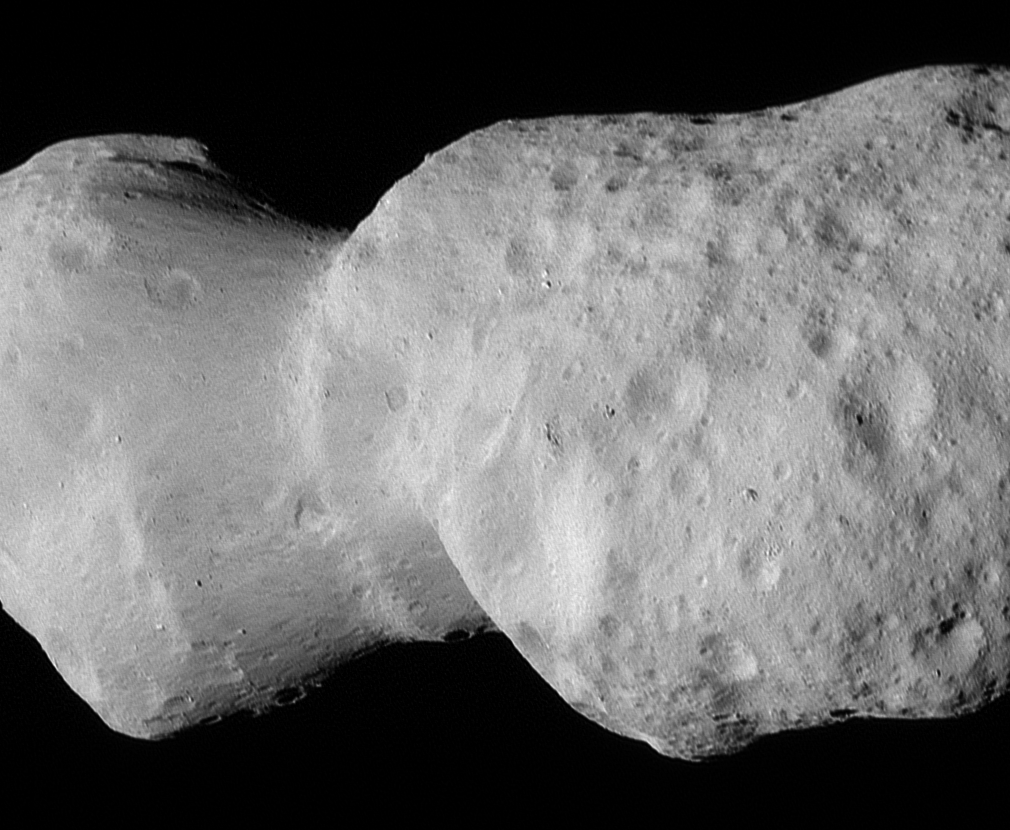
Information from Lucy’s other instruments will be downloaded from the craft and processed within the next couple of weeks. This will include color images and infrared spectra that could yield clues to Donaldjohanson’s surface composition, particle size, and level of radiation.
The Lucy mission will spend the next two years traveling through the asteroid belt, arriving at its next target Aug. 12, 2027: the asteroid 3548 Eurybates and its satellite, Queta. Eurybates and the rest of Lucy’s future targets are Trojan asteroids, a family of asteroids gravitationally linked with Jupiter. During this leg of the mission, Lucy will encounter a total of five Trojans and three satellite objects. It will end its mission after flying by asteroid 617 Patroclus and its satellite Menoetius on March 3, 2033.
RELATED: Surprise! NASA’s Lucy mission uncovered an asteroid moon that is actually two in one

